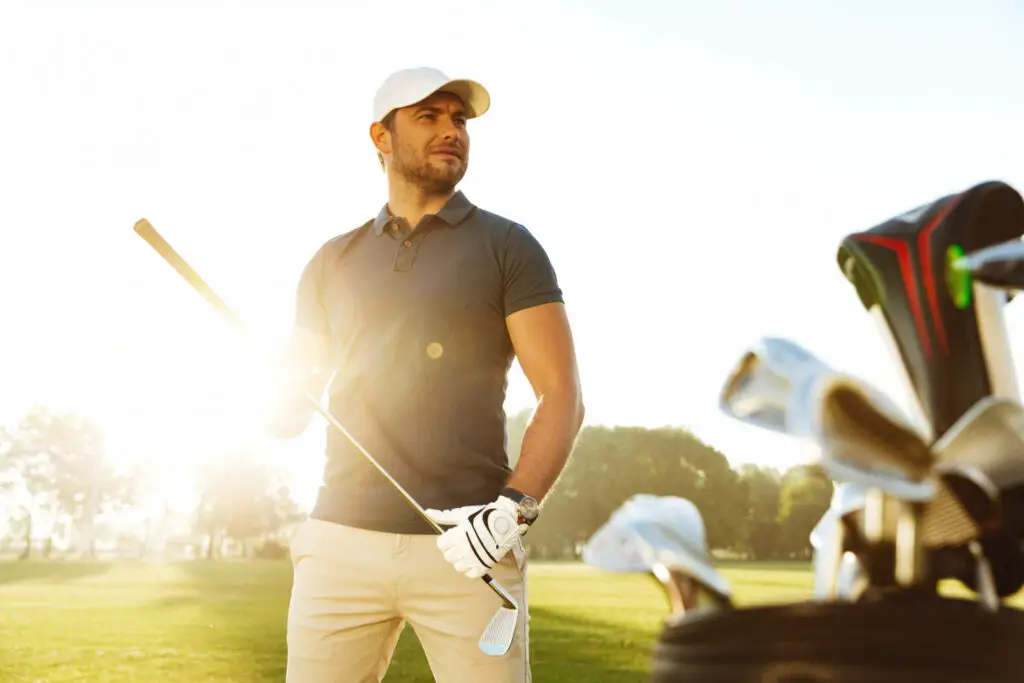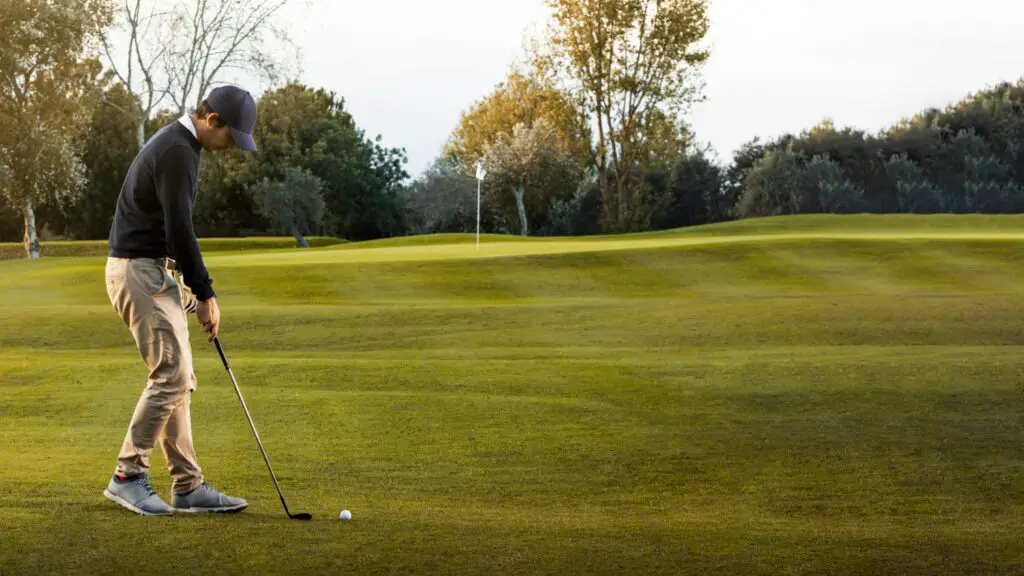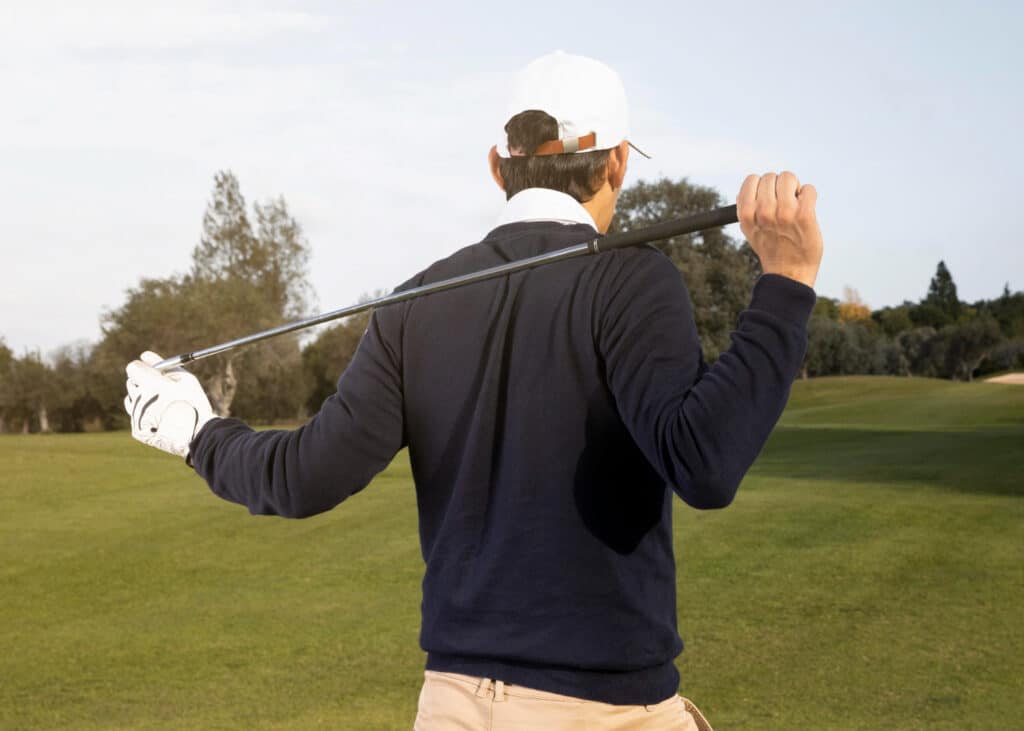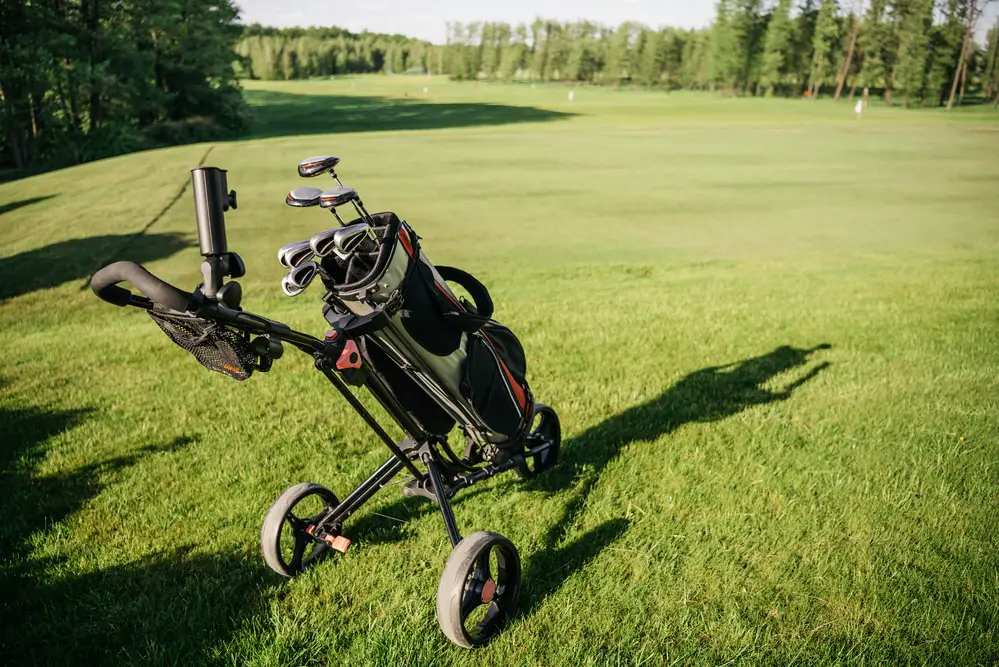Last Updated on November 13, 2023
Golf is an enjoyable game, and the right equipment can make a huge difference in one’s performance. One of the most important pieces of golfing equipment to consider is the length of the club. Clubs that are too long can lead to inefficient shots and inaccurate results, while clubs that are too short may force players into awkward stances and unnatural swings. In this article, we will discuss how to determine whether or not your golf clubs are too long. We will provide tips on evaluating the fitment of your own set of clubs as well as advice on when it might be time for replacements. By understanding these concepts, you’ll have all the information you need to maximize your golfing potential!
Golf Club Length: What’s The Ideal?
Golfers of all levels have long been debating the ideal length for golf clubs. A club that is too short or too long can affect a player’s swing, accuracy and, ultimately, score. Understanding what constitutes an “ideal” golf club length is essential in order to maximize performance on the course.
The primary factor when determining an ideal golf club length is based on a golfer’s height and arm length. Generally speaking, the shaft of a driver should come up to somewhere between your chin and nose when standing with the headcover touching your sternum. This helps ensure proper posture throughout the swing. When using irons, the shaft of each individual iron should reach just below your collarbone as you address it at address. It is important to note that these are guidelines, not absolute rules. Different players may prefer different lengths depending on their personal preferences and body types. Additionally, some specialty clubs, such as wedges, may be shorter than other clubs due to changes in loft angle or weight distribution within the clubhead.
If a golfer finds that their current clubs do not meet these criteria, it could indicate that they are either too short or too long for them personally, and adjustments may need to be made accordingly. Experienced professionals can help make recommendations regarding specific alterations if needed.

Measuring Your Height And Arm Length
In order to accurately determine the ideal golf club length for you, it is necessary to measure your height and arm length. Measuring your height should be done with a tape measure or ruler on a level surface. The distance from the floor to the top of your head should be measured. This will give an idea of how long a golf club needs to be in relation to your body size.
Additionally, measuring your arm length can help determine whether or not you need longer clubs as well. To do this correctly, stand up straight and extend one arm out horizontally parallel to the ground. Measure from the centre of your back at the base of your neck all the way down to where your wrist meets your hand, and record that measurement.
Comparing these two measurements provides information regarding what type of golf club lengths would best suit you based on both physical stature and reach. With this knowledge, selecting appropriately sized shafts becomes much easier and accurate fitting becomes more achievable than ever before. Ultimately making sure that each swing is performed optimally with every stroke taken during a round of golf play.
Checking The Lie Angle Of Your Clubs
Checking the lie angle of your golf clubs is an important step to ensure that they are not too long. The best way to do this is by using a lie board or some other type of device designed for checking lie angles.
When checking the lie angle, you should position the club so that it lies flat on top of the lie board. This will reveal whether the sole (the bottom) of the club is perpendicular to ground level when addressing the ball. If it isn’t, then there’s a good chance your clubs may be too long. Here are three key things to keep in mind when performing a lie angle check:
- Checking Club Length: To properly complete a lie angle check, first, make sure that your clubs are at their standard length as recommended for your height and swing style. Adjustments can always be made after confirming proper fitment with a professional fitter.
- Lie Angle Adjustment: By adjusting the club’s loft relative to its shaft length, you can determine if certain clubs are better suited for you than others. Professionals recommend changing either one degree up or down from what would normally be considered standard-length clubs.
- Impact Dynamics: It’s also important to think about how adjusting your club’s lie angle might affect impact dynamics – i.e., how well you strike shots along different lines off the tee box and into greenside hazards during play. A change in any direction could potentially have an effect on performance and accuracy levels; thus, careful consideration must be taken before making adjustments related to club length or lie angles.
In addition, consider consulting with a certified golf instructor who has experience in helping players find their ideal set-up based on individual characteristics such as body size and swing speed preferences.
Adjusting The Loft Angle Of Your Clubs
Golf club loft is an important factor to consider when adjusting the angle of your clubs. It can affect the trajectory, spin rate, and distance of shots hit with a golf club. Knowing how to adjust the loft angle on your golf clubs will help you optimize their performance for different types of shots.
There are two primary methods for adjusting golf club loft: weighting and bending. Weighting involves adding weights inside or outside of a golf club head in order to increase its loft. Bending involves physically manipulating the shaft and/or hosel (the connection between the shaft and clubhead) in order to change the angle at which it sits relative to the ground. Clubfitting experts often use specialized tools such as torque wrenches to accurately measure and adjust these angles. Whether using weights or physical manipulation, adjustments should be made incrementally so that they match up with any changes made on other clubs during a set fitting session.

Golf Swing Analysis
Golf swing technique plays a vital role in the overall performance of a golfer. An effective golf swing is one that results in a consistent and powerful impact with the ball, enabling the golfer to hit it accurately and precisely. The accuracy and power of each shot also depend on proper golf club measurements such as lie angle, length, loft angle, weight balance, shaft flex, etc. Swing path analysis can provide useful feedback about these parameters by measuring things like hip rotation speed or shoulder turn radius.
Additionally, swing speed measurement offers valuable insight into how fast the arms are moving through the impact zone, which can be used for fine-tuning adjustments to the individual’s golf swing.
By monitoring progress over time with this data collection approach, a player’s swing mechanics can be improved so as to maximize their game potential. Tracking metrics from practice sessions allows players to identify issues when they arise and make corrections accordingly. With precise knowledge about club fitment specifications obtained from analyzing individual swings along with further experimentation at the driving range or course, an optimal set up for any given golfer can be derived.
Analysing Ball Flight & Pattern
Analyzing a golfer’s ball flight pattern can reveal if their clubs are too long. Golf ball trajectories that result from golfers using the incorrect length of the club will generally curve away from the target as opposed to towards it. Additionally, golf balls hit with clubs that are too long may spin more than expected; this is because players must compensate for the extra inches in their swing and increase the speed at which they strike the ball.
Consequently, golfers should assess whether their ball trajectory and spin follow what would be considered normal when struck by a properly fitted club. If not, then it is likely that the golfer is using clubs that are too long. Ultimately, analyzing one’s own ball flight pattern is an effective way of determining if one needs shorter or longer golf clubs.
How Shaft Flex Affects Distance & Accuracy
Golf shaft flex plays a large part in determining the distance and accuracy of each shot. Depending on the golfer’s skill level, a golf club may need to be fitted with either stiffer or more flexible shafts. Stiffer shafts are best suited for professional players who have mastered their swing technique, while more flexible shafts can help beginner and intermediate golfers get better results from their shots. Club fitting is an important process that helps determine which type of shaft will work best for each golfer based on his or her individual swing characteristics.
The amount of flex at impact affects how far the ball travels as well as its direction. Too much flexibility leads to inaccurate shots that can go off course, whereas too little flexibility produces shorter drives due to limited energy transfer from the clubhead to the ball. Therefore, it is essential to find the right balance between flexibility and stability when selecting golf clubs, as this will ensure optimal performance on the course. Finding this balance requires careful consideration during club fitting sessions so that each golfer finds the perfect set of clubs tailored to his or her needs.
Frequently Asked Questions
How Often Should I Get My Golf Clubs Checked?
The maintenance and proper fitting of golf clubs are essential for an optimal playing experience. Golf club inspection should be a part of regular golf club maintenance to ensure that the equipment is suitable to its user’s height, build, and playing style.
Golfers should have their golf clubs inspected by professionals at least once a year in order to assess any changes that may have occurred in terms of physical size or playing style. Professional assessments are necessary as they will help determine if the golfer needs new clubs, shorter ones, longer ones, etc., depending on individual specifications. Furthermore, having one’s golf clubs checked regularly helps maintain optimal performance during game play.
Generally speaking, it is important for all golfers to consider professional assessment when it comes to inspecting and maintaining their golf clubs. Regularly scheduled inspections can help ensure that each player has the right set of tools suited to their specific abilities and requirements so that they can enjoy their time on the course without worrying about their equipment becoming outdated or unsuitable over time.
Is It Better To Have Longer Or Shorter Golf Clubs?
The length of golf clubs is an important factor to consider when deciding which set to purchase. Generally, the rule of thumb is that longer golf clubs are better suited for taller players, and shorter golf clubs are more suitable for smaller players. However, a player’s individual swing should also be taken into account when determining whether or not longer or shorter golf clubs would benefit their game.
When considering club length, it is essential to note that having longer golf clubs does not always guarantee improved performance on the course. Longer clubs require greater strength from the golfer in order to generate appropriate power during swings. This can cause issues if the player’s physical capabilities do not match up with the extra weight of the extended shafts. On the other hand, shorter clubs necessitate increased accuracy as they produce weaker shots due to lack of momentum created by slower swings. Ultimately, choosing between long and short golf clubs comes down to personal preference and style of play. It is best practice to try out different lengths before making a final decision so that one can find which size works best for them individually.
Conclusion
Ultimately, determining whether your golf clubs are too long or short comes down to personal preference and skill level; however, having them regularly assessed by a professional is recommended in order to maximize performance and improve overall playability. With proper assessment and care, players can ensure their equipment is up-to-date and tailored specifically for their needs so that they can enjoy playing at their highest potential every time they hit the green.



